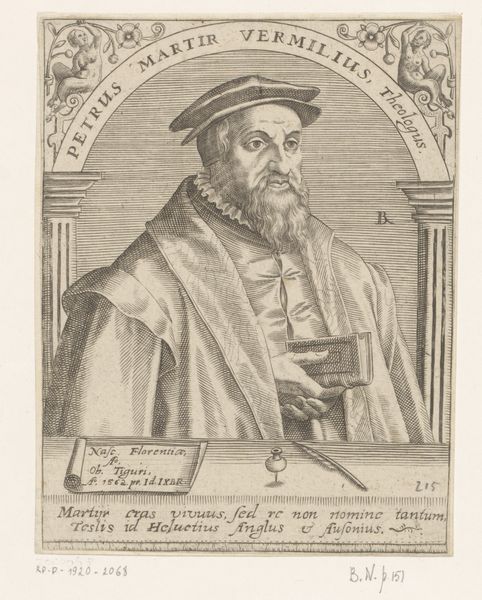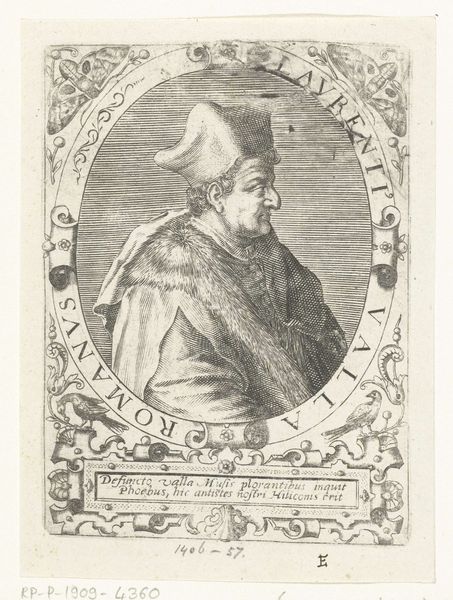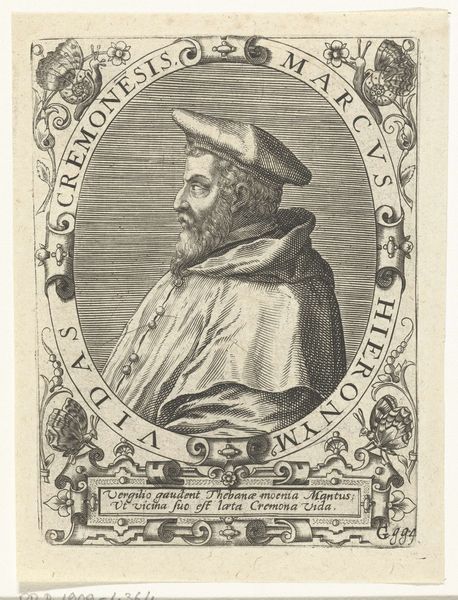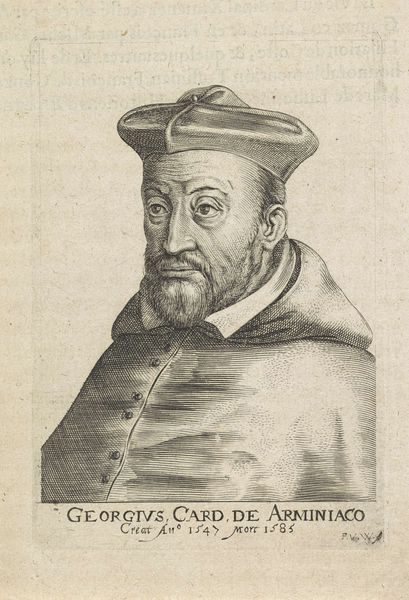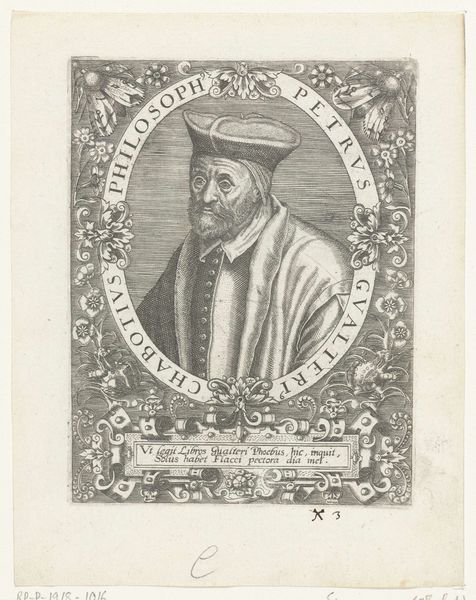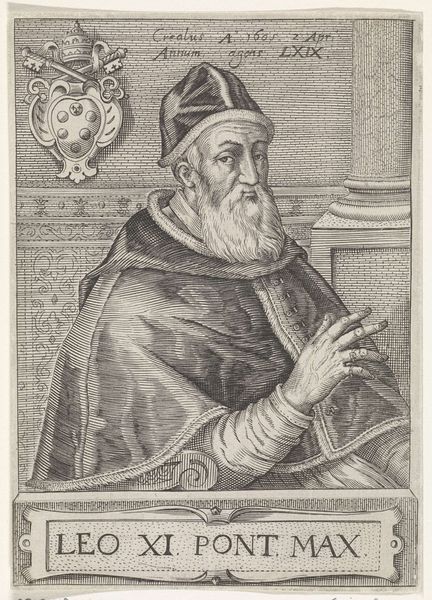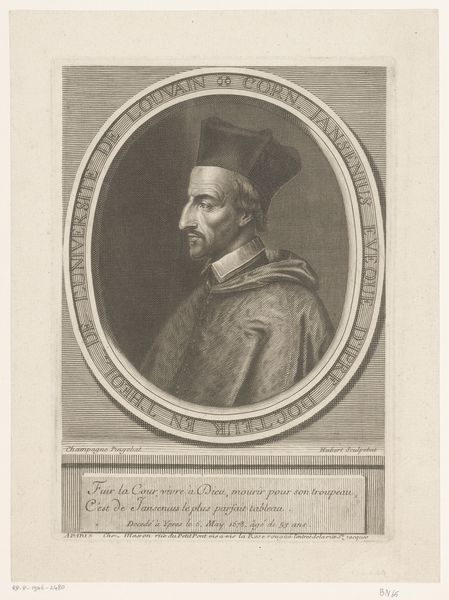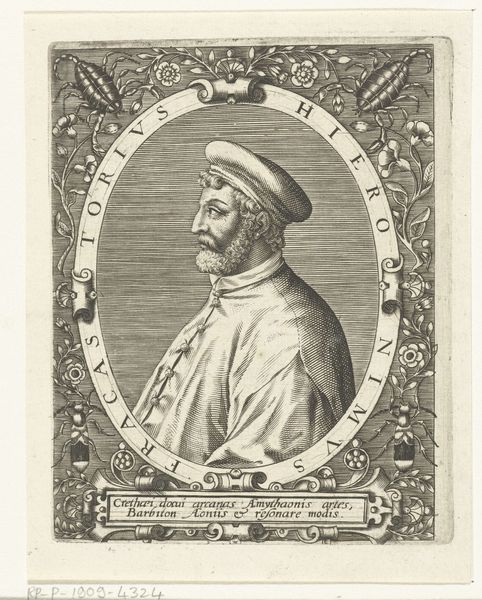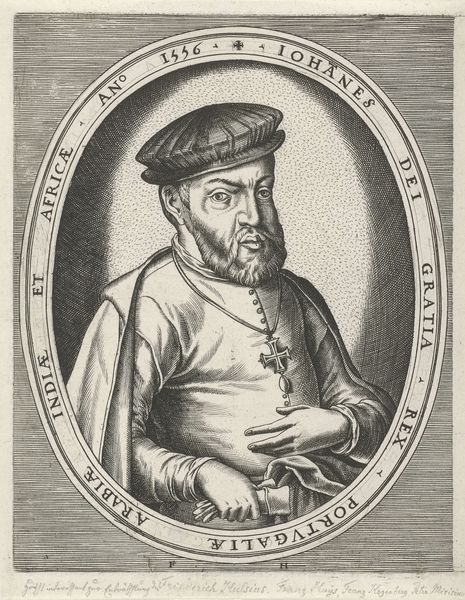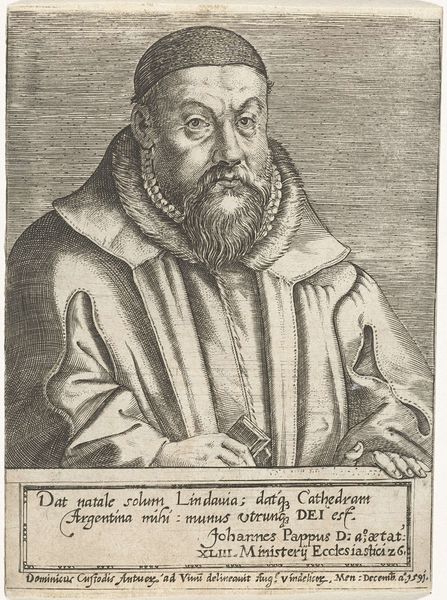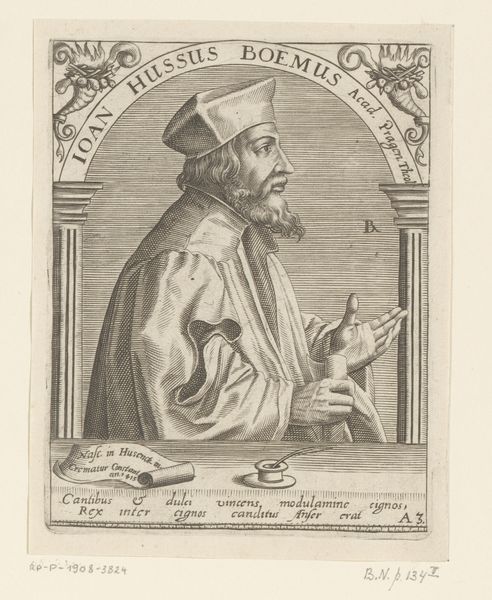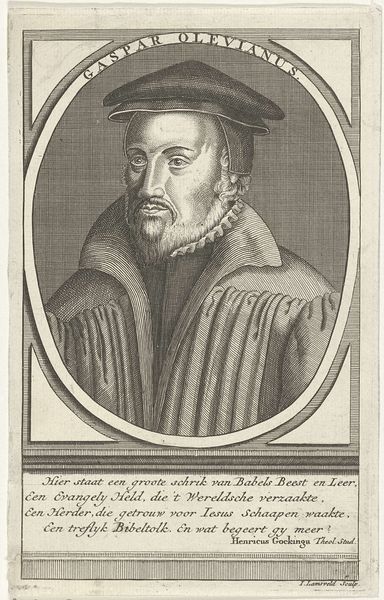
print, engraving
#
portrait
#
aged paper
#
baroque
# print
#
old engraving style
#
history-painting
#
engraving
Dimensions: height 168 mm, width 118 mm
Copyright: Rijks Museum: Open Domain
Curator: This is a print of Joost de Damhouder, created sometime between 1587 and 1604 by Philips Galle. The artwork is currently held here at the Rijksmuseum. Editor: The level of detail achieved through engraving is quite amazing! Just look at the textures in his beard and the way light seems to catch his eye. There’s something austere yet compelling in his gaze. Curator: It is a masterful print, very typical of the era. Galle was working in Antwerp, during a period when the city held significance as a centre for artistic and intellectual production. Prints like these played a crucial role in disseminating images and ideas widely, functioning almost as the mass media of their day. Editor: Mass media… indeed. The very act of making someone’s portrait so accessible imbues them with lasting influence and amplifies their impact. He is holding a book there; his steady, intellectual aura implies someone deep in thought, who is very composed. It adds to the power of the portrait. Curator: Absolutely. The book acts as a crucial identifier. Damhouder was, after all, a very influential jurist, a writer of legal texts. His image here contributes to constructing an identity associated with humanist values, with learning and the law. Editor: Legal and humanist… yes, even the slight upward tilt of his chin and the stern look in his eyes express determination. His clothing denotes position and status, while he seems a study in the restrained authority and confidence. I would love to know who decided to have the portrait created in the first place, and how that may have impacted Philips Galle's presentation. Curator: Interesting questions, truly, given that those things are usually heavily considered and often decided by a group of people. The visual representation was key in reinforcing the subject's position. This engraving solidifies the public role and commemorates it for further generations. Editor: Considering what this symbolizes through those visual cues makes it hard not to feel somewhat intimidated by his gaze. This discussion altered how I read it now. Curator: It’s precisely those subtle nuances, which the symbols carry with them, that reveal deeper insights into our perception and historical narratives.
Comments
No comments
Be the first to comment and join the conversation on the ultimate creative platform.
